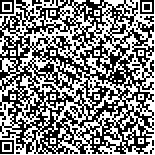下载中心
优秀审稿专家
优秀论文
相关链接
摘要

在很多对土壤水分被动微波遥感的研究中 ,为简单起见 ,覆盖的植被层使用了一种简单的模型来表征其散射和衰减特性。本文中使用了一种基于辐射传输理论的离散模型来研究植被的发射率、传输率。这种方法可以更加真实地刻划组成植被的散射个体如叶、茎、树枝、树干等对这两个参数的影响 ,因而能更准确地描述植被对下垫面的影响。为了减少土壤水分反演算法中未知量的数目 ,该文给出了这两个参数的模拟结果分别在AMSR E三种不同频率下的简单关系。
The commonly used soil moisture retrieval at vegetated area from microwave radiometry data assume a simple model of vegetation, which is characterized by vegetation volume fraction, effective dielectric constant, plant moisture content, etc. This algorithm is successfully applied under lower frequencies and lower vegetation, but the data used in single scattering albedo is simply assigned a fixed value which is independent of frequencies and polarization, sometimes are even set to zero. In this study, a radiative transfer model is used to model the emissivity and transmissivity of forest canopy, which is more realistically characterized as a volumetric medium consisting of discrete scatters (leaves, stems, tree branches, and trunks.) The scattering coefficient is obtained by integrating the Stokes matrix in the whole sphere region, the extinction coefficient is calculated by forward scattering theory. This mode is expected to cover a wider frequency range as well as vegetation species from lower crop to forest canopy. To facilitate the soil moisture inversion from radiometric data, the unknown variables need to be reduced. The possibility of fitting the modeled emissivity and transmissivity of vegetation canopy into simple equations, and the relationships of these parameters between different microwave radiometric frequencies were studied and the results are presented in this paper.

